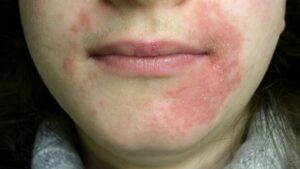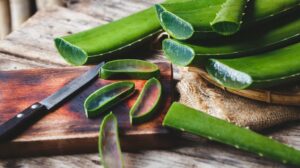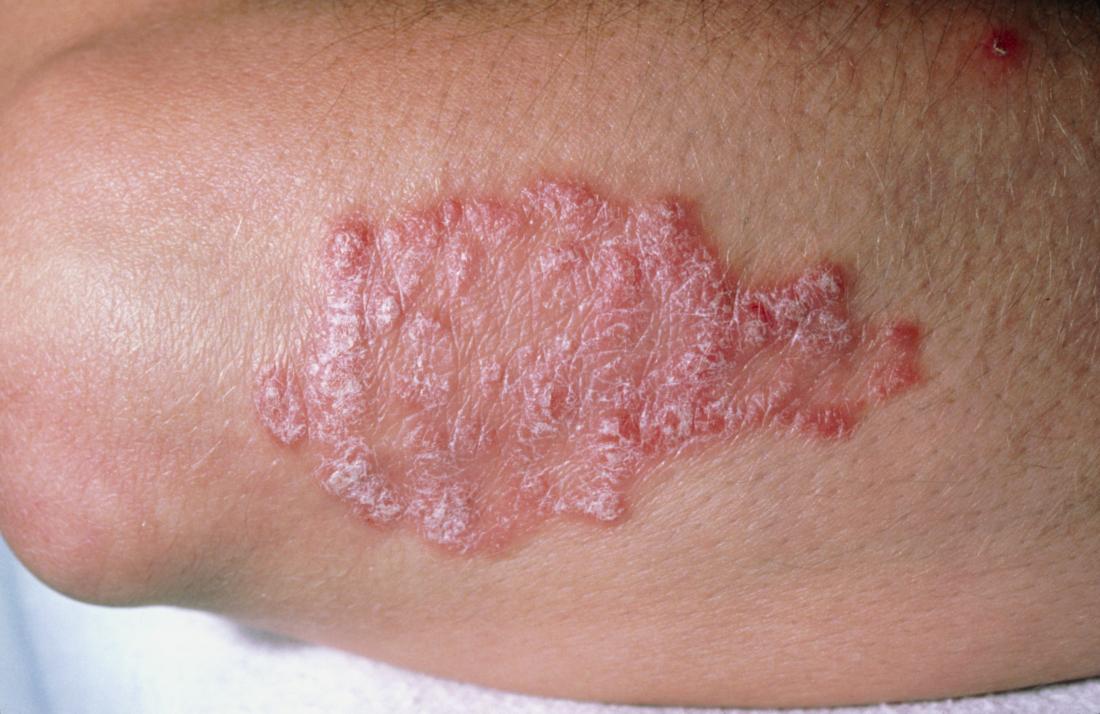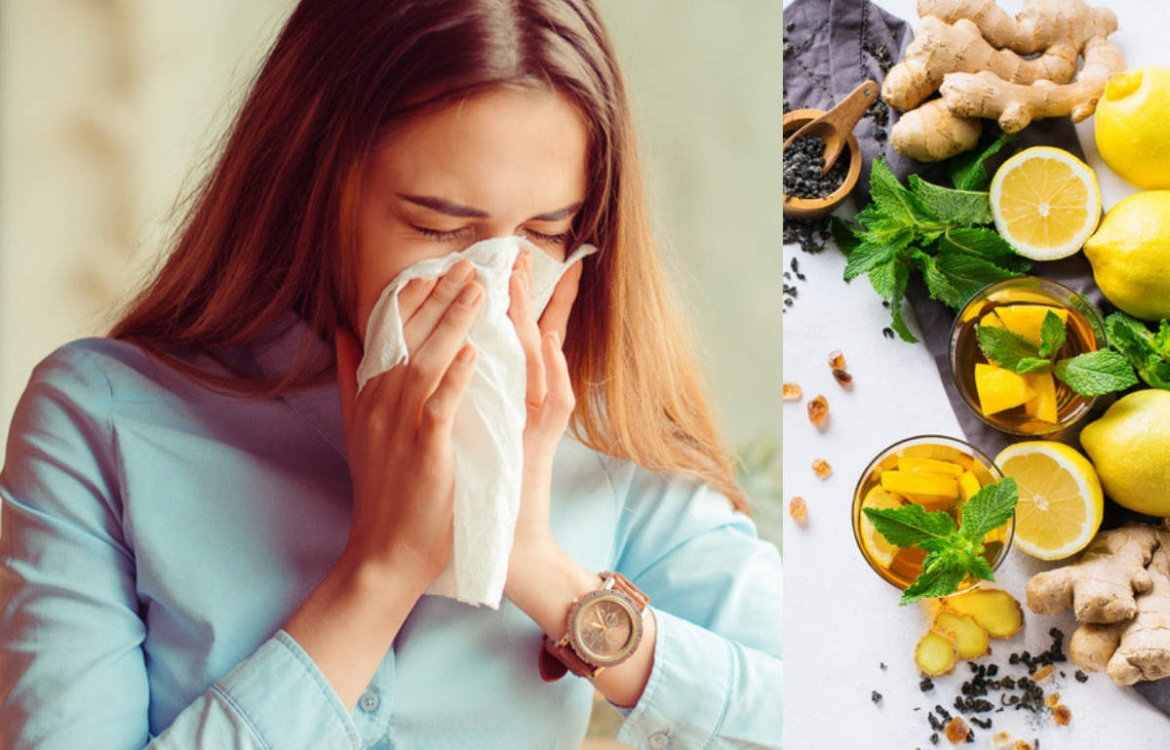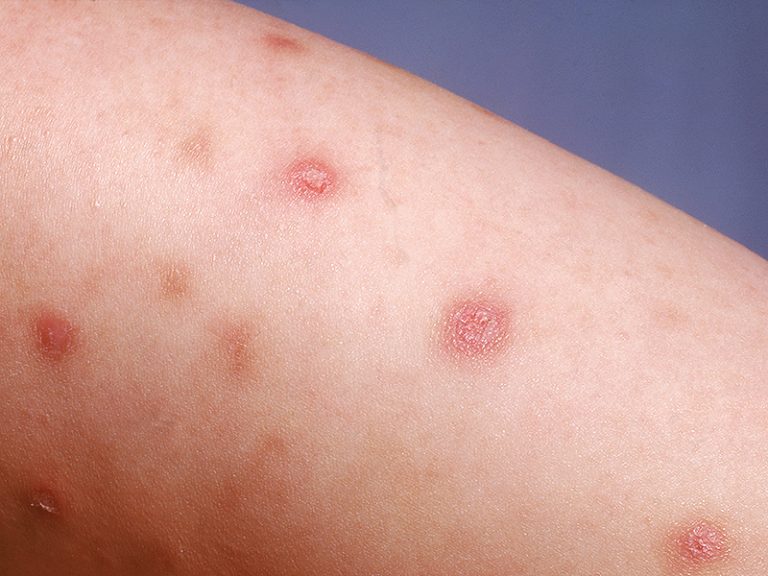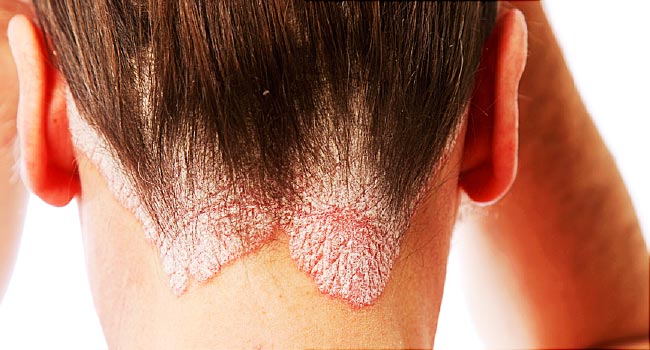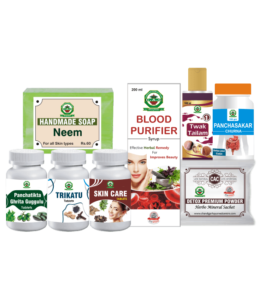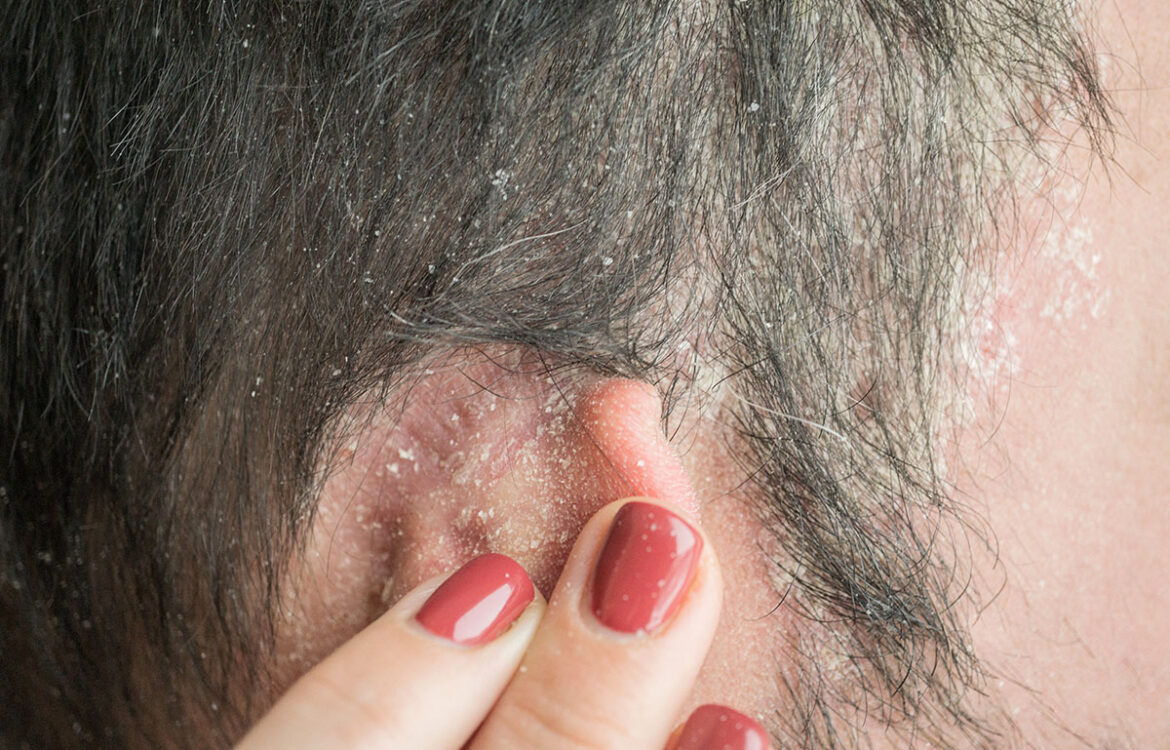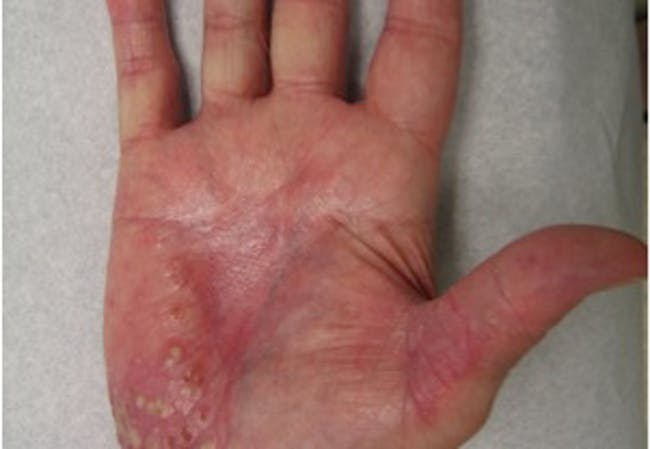Author Archives: Dr. Vaidya Karanvir Singh
PERIORIFICIAL DERMATITIS
- December 4, 2021
- Posted by Dr. Vaidya Karanvir Singh
- 0 Comment(s)
Periorificial dermatitis is an inflammatory rash involving the skin around the mouth and nose.
The rash may be spread up to the nose or even the eyes.
Perioral dermatitis usually looks as red or scaly bumpy rash. There may be a clear fluid discharge. Slight itching and burning can also occur.
The condition is most common in women, but it can be seen in all ages, races, and ethnicities. It can occur in children of any age.
Perioral dermatitis may be disappear without proper treatment, but it may reappear after sometime.
CAUSE:- The cause of perioral dermatitis is unknown. Some other causes of perioral dermatitis include:
bacteria getting into the hair follicles
- an allergic reaction
- irritation resulting due to a using skin care product
- hormonal changes
- taking a birth control pill
- strong winds
- UV light
SYMPTOMS:-
- Bumps (1-2 mm)
- Red
- Pus-filled
- Dry patches
- Mild scaling (in some cases)
- Pruritus (in some cases)
- Mild stinging & burning
TYPES:- Common forms of eyelid dermatitis include:
- Allergic contact dermatitis develops because of an allergic reaction that causes inflammation of the skin, such as pollen in a person with hay fever. Some cosmetic products are common causes of allergic skin reactions.
- Irritant contact dermatitis is caused by the eyelid coming into direct contact with a substance that damages the outer layer of the skin, such as certain types of makeup, soaps, and detergents.
- Atopic dermatitis is a form of eczema that can affect the eyelids.
- Seborrheic dermatitis it is a condition in which the skin to become inflamed and flakey also whitish in color. It also occurs on the scalp but can also affect oily areas of skin, such as the eyelids.
- RISK FACTOR:- The skin around the eyes is thin and delicate, and so the eyes are especially sensitive to irritation.
- While it is hard to predict who will develop eyelid dermatitis, certain factors may increase the likelihood of the condition developing. These include:
- Age. Children’s are more prone to certain types of dermatitis such as seborrheic dermatitis, also called cradle cap.
- Genetics. Skin conditions often run in families.
- Poor personal hygiene. If body is not clean it can lead to this condition.
- Certain professions. These include frequent exposure to disease causing agent , such as construction, envoirmental , cosmetic, and beauty workers.
- Certain medications. Some medicine like neomycin or beta-blockers can cause the dermatitis.
- COMPLICATION:– Some complications that may occur with eyelid dermatitis include:
- Skin infections. Scratching or rubbing the eyes can lead the skin infections.
- Difficulty sleeping. If eyelid get infected it can cause discomfort during sleeping.
- Other skin conditions. In case of eyelid dermatitis to occur before skin inflammation on other areas of the body.
- Neurodermatitis. Chronic scratching can cause the skin to become discolored and leathery.
- Medical conditions. Some disease are more prone to dermatitis like Hay fever, asthma or other skin conditions.
DIAGNOSIS:- It is possible to self-diagnose eyelid dermatitis if the cause is obvious.
- A doctor can often diagnose the form of dermatitis through a physical examination.
- When an allergic reaction is suspected as the cause, a doctor may perscribed a patch test.
- The doctor or dermatologist may also perform a skin culture test to find out the possible infection
- If an irritant is the suspected cause, a repeated open application test( ROAT) can be used.
- It can be more difficult to determine a specific irritant compared with an allergen.
PREVENTION:- It may not be possible to prevent all cases but you should follow all these steps.
- The best prevention is avoid the use of any steroids around your mouth.
- Washing your skin daily with good quality cleansers can help keep your skin free of irritants and acne.
- Light moisturizers can also stop your skin from drying out and roughned.
AYURVEDIC VIEW FOR THE CAUSE OF PERIORIFICAL DERMATITIS:-
According to ayurveda dermatitis result due to it wrong diet and lifestyle, which disturbs the digestion and trigger pitta dosha. Pitta menifests in the skin and causes the heating, toxins known as Ama get accumulated and then these toxins accumulate in body tissues ,infecting them at a deep level and causing dermatitis.
AYURVEDIC HERBS USED IN PERIORIFICIAL DERMATITIS:-
- Nirgundi
- Turmeric
- Aloevera
- Manjishtha
- Neem
- Gandhak Rasayan
- Guduchi
- Triphala
AYURVEDIC TREATMENT FOR PERIORIFICIAL DERMATITIS:-
According to ayurveda each person has three energies and called in ayurveda is dosha. These doshas include vata, pitta, and kapha energies. Each dosha controls specific bodily functions. According to Ayurvedic medicine, the doshas should be in balance and to maintain good health. Thus, the aim of Ayurveda is to balance them by natural treatments. It also aims to purify the body, which is said to remove toxins of the body. In case of skin disease the ayurvedic treatment include combination of therapies and medications. During this treatment patient will also need to make some dietary changes depending on the Dosha . Medications help in reducing the skin irritation, reducing itching, and remove the root cause of the problem.During the treatment patient has need to change in diet and lifestyle. In Panchakarma treatment procedure like lepam (face packs with medicinal herbs), dhoopanam(medicated fumigation), and . Medications help in reducing the skin irritation, reducing itching, and remove the root cause of the problem. During the treatment patient has need to change in diet and lifestyle. In Panchakarma treatment procedure like lepam (face packs with medicinal herbs), dhoopanam(medicated fumigation), and udhwarthanam(massage with dry herbal powders), Virechana, Dhara, Snehana, etc. are used as per the patient’s condition. It is concluded that a panchkarma treatment is very useful in all skin disorder.
Five Nutritional Supplements for Sun Protection
- December 4, 2021
- Posted by Dr. Vaidya Karanvir Singh
- 0 Comment(s)
- Ultraviolet radiation from sunlight exposure is known to cause photodamage in the skin.Repeated exposure increases the risk of other conditions such as wrinkles, dark spot and skin cancer.
- While avoidance of intense sunlight ,sun protective clothing and sunscreens are important to avoid sun damage,
- The use of oral supplements has gained popularity in their potential to assist with sun protection.
- A taking of supplements is one method to shield your skin from UV radiation by preventing sunburns and ultimately carcinoma.
- Sunburn is seen as a standard reaction when skin is excessively exposed to sunlight. This injury is named UV-induced erythema.
- UVB radiation is the most important region of typical sunburn, which starts to develop within a some hours.
The individual sensitivity toward erythematogenic UV exposure.
These five nutritional supplements may help in prevent the skin from sun:-
NICOTINAMIDE (Vit B3):-
Nicotinamide (also known as niacinamide) is that the precursor of nicotinamide adenine dinucleotide (NAD+) which is vital cofactor for ATP production.
ATP provides energy source to drive many process of living cells .
- From UV radiation the immunosupperssion and DNA damage is additionally reduced by nicotinamide.
- Nicotinamide is a Vitamin B3 supplement that may help prevent skin cancers and precancers cell growth.
- According dermatologists said that Vitamin B3 supplements reduced the rate of new squamous-cell and basal carcinoma.
POLYPODIUM LEUCTOMS:-
- Polypodium leuctoms is a fern from South America that has shown clinical indications for psoriasis, atopic dermatitis (eczema), vitiligo, polymorphic light eruption, and melasma
- In this study, a comparison group showed a greater chance of experiencing one or more sunburn episodes while the treatment group with this can be reduce the chances of experiencing sunburns.
- UV radiation damages DNA and reduces the flexibility of skin cells to manage cell proliferation.
- usually, the skin can repair DNA mutations, but excessive damage may cause to long-term mutations and carcinoma. If DNA is harmed, then UV radiation aggarvate the danger of skin cancer by suppressing skin antitumor immunity.
- Some cells helps to find and respond to cancer called as antitumour immune cell. In condition of UV exposure, suppression of these cells in the skin will lead the chance of skin cancer.
SILYBUM MARIANUM:-
- Milk thistle is a seed extract effective in helping in skin tanning by sun exposure.
- Silymarin can provide protection against different stages of UVB induced carcinogens.
Read Also: Surya Snan or Ssun Bath Benefits
BETA CAROTENE:-
- According to nutritional aspect the phytochemicals in humans that is, the availability of carotenoid micronutrients by dietary means to the skin and their role in protection.
- However, the food contains a complex mixture of the many constituents, so that other components may also help to the observed activity.
- Molecules with correct structures absorb UV rays and stop direct damage of cellular targets.
ASTAXANTHIN:-
- UV light from the sun is classified into UVA, UVB, and UVC depending on different properties of light.
- Both UVA and UVB rays play a role in skin cancer and skin aging.
- UVA light rays may be less intense than UVB, but UVA is more perportion within the environment and penetrates deeper into the skin.
- Human bodies have metabolic processes that allow us to get energy by burning fuel with oxygen.
Astaxanthin is a carotenoid that derived from algae, yeast, salmon, trout, krill, shrimp, and crayfish, giving some of these animals their orange-pink color.
VITAMIN E RICH FOOD:-
- Vitamin E rich food like grains, nuts, olive oil, and sunflower oil.
- Vitamin E comes from plants and must be present in diet.
- Dermatologist suggested that it has antitumorigenic and photoprotective properties with the ability to protect the skin from the UV radiation.
- As a VitaminE tocopherol, acts a free-radical scavenger. Natural form of Vit.E is also help in delaying the skin ageing.
HOW SHOULD SUPPLEMENTS BE USED?- Supplements aren’t a replacement for sun protection but it should be help to stay skin healthy.
The best ways to protect skin from the sun, include avoiding intense sunlight, wearing sun protective clothing, and using broad-spectrum sunscreens.
AYURVEDIC HERBS USED IN SKIN PROTECTION FROM SUN:-
- AMLA
- KESAR
- ALOEVERA
- GREEN TEA
- HALDI
- OLIVE TREE
- CHANDAN
- ELAYACHI
HOME REMEDIES FOR SKIN PROTECTION FROM SUN:-
- Add one teaspoon of milk and two spoons of oatmeal and add two tablespoons of tomato juice, and also add orange pulp and a some pinches of poppy seeds. Make the paste of the mixture together so that it forms a thick paste like a face-pack.Afterthat apply this mask on face.
- And leave for 15 minutes and rinse with water. The treatment protect the skin from the negative Apply milk mixed with glycerin all over the face effects of the sun.
- Buttermilk provide relief to the burning skin, but also help in lighten the tan as curd has natural bleaching
- A full of hand of neem leaves boil on a very low fire in four cups of water for one hour. Leave it overnight. Next morning, pour the water and make a paste of the leaves. The water can be used to rinse the face. Neem contains organic sulphur compounds which help to keep skin healthy.
- Add one cup of apple cidar vinegar to a bath to help balance the PH of sunburned skin, and promote healing.
- Add 2 cups of baking soda to the bath water as these can be drying on already dry and sunburned skin.
- Apply fresh aloe vera gel to the skin which affect by sun exposure. It helps to heal sunburn and remove tan. Aloe vera contains zinc, which have anti-inflammatory properties.
- Papaya pulp will be applied on the skin like a mask, washing it off after 20 minutes. Papaya contains enzymes and helps to get rid of dead skin cells and make the glowing skin. Mix curd or lemon juice with in the papaya pulp to get rid tan.
- We all need some sun exposure. When skin is come to contact the sun, our bodies make VitaminD which helps the body absorb calcium for stronger, healthier bones.
- Excessive exposure to the sun’s ultraviolet (UV) rays can cause skin damage, eye damage,Hair damage, immune system suppression, and carcinoma.
- Sunlight is essential to many living things ,but it also has a dangerous side.
TRIPHALA TAILAM
- December 4, 2021
- Posted by Dr. Vaidya Karanvir Singh
- 0 Comment(s)
DESCRIPTION –
Triphala is a three-fruit combination of Amalaki fruit (Emblica Officinalis), Bibhitaki fruit (Terminalia Belerica) and Haritaki fruit (Terminalia Chebula) in equal proportions. Triphala Tailam is a classical formulation available as Ayurvedic herbal oil. It is used in the treatment of headache, hair fall, grey hairs, etc. It also helps to relax the muscles and muscles cramps thus relieving pain. It balances all the three doshas of your body thus maintaining proper blood circulation. It provides soothing effect to the affected area of pain. The herbs present in this oil are natural pain relievers. This herbal Tailam used for external application only.
TRIPHALA TAILAM INGREDIENTS:
Each 10 ml contains:-
- Haritaki Svarasa (Terminalia chebula) ——————- 66 parts
- Vibhitaki Svarasa (Terminalia bellirica) ——————– 10.67 parts
- Amla Svarasa (Emblica officinalis) ————————— 10.67 parts
- Tila Taila (Sesame Oil) ——————————————- 8 parts
TRIPHALA TAILAM USES-
- It is used for all diseases pertaining to neck, eyes, ear and throat.
- It is used for all diseases pertaining to neck, eyes, ear and throat.
- Triphala tailam is useful in relieving headache, sinusitis and rhinitis.
- It is used to treat split hairs, grey hairs.
- It improves hair strength.
- Effect on dosha- balances vata, pitta and kapha.
MODE OF USAGE
- It is used in ayurvedic treatment such as shirodhara, shirobasti and Basti (medicated enema).
- It is used for head massage
- Triphala tailam is used as hair oil.
DOSAGE– As Directed By the Physician.
ABOUT PRODUCT:
- Chandigarh Ayurved Centre products are 100% safe and natural. MADE IN INDIA.
- This product is formulated under the guidance of MD Ayurveda expert.
- Natural and herbal products for overall health.
- Free from preservatives and chemicals.
- 125 years of serving mankind through ayurveda.
- Serving society 4th Generation in Ayurveda.
PLAQUE PSORIASIS
- December 4, 2021
- Posted by Dr. Vaidya Karanvir Singh
- 0 Comment(s)
- Plaque psoriasis is a chronic autoimmune condition. It appears on the skin is thick patches and reddish scaly skin.
- Plaques typically appear red patches covered with a silvery white scale.
- In this the plaques may appear darker and thicker and more of a purple or grayish color or darker brown.
- Plaques can appear anywhere on the body appear on the knee, elbows, scalp.
- Plaques usually appear symmetrically on the body.
SYMPTOMS: – Common signs and symptoms include:
- Red patches of skin covered with thick, silvery scales
- Small scaling spots (commonly seen in children)
- Dry, cracked skin sometime it may bleed
- Itching, burning or soreness
- Thickened, pitted or ridged nails
- Swollen and stiff joints
CAUSE: – Psoriasis has no exact cause.
- There are multiple proposed risk factors for psoriasis although genetic predisposition is thought to be the main contributor.
- Environmental and behavioral factors may also play roles. In particular, increased rates of smoking, alcohol, and obesity are typically found among patients with psoriasis.
- Some medications and infections have also been identified as possible triggering factors for psoriasis.
- The following have been shown to trigger the development of psoriasis:
- High stress
- Infections (strep throat)
- Medications (malaria drugs, lithium)
- Heavy alcohol consumption
- A severe sunburn
- Reduced immunity
- Psoriasis tends to run in families, but it may be skip generations.
CLASSIFICATION: – The severity of plaque psoriasis is determined based on the amount of the body covered in plaques:
- Mild Psoriasis: Less than 2 percent
- Moderate Psoriasis: 3-10 percent
- Severe Psoriasis: 10 percent or more
DIAGNOSIS: – Plaque psoriasis can be identified during a visual examination.
- As psoriasis has a strong genetic association family history can aid in the diagnosis.
- You should also obtain your patients medical history and information about their specific symptom.
RISK FACTORS: – These factors can increase your risk:
- Family history. The condition runs in families. If psoriasis occurs in one parent then increases the risk of getting the disease.
- Stress. If patient suffer from stress it impact immune system, high stress levels may increase risk of psoriasis.
- Smoking. Smoking can increases risk of psoriasis but also may increase the severity of the disease. Smoking also play a key-role in the occurance of the disease.
HOW PLAQUE PSORIASIS ASSESED:- Patients with chronic plaque psoriasis should be assessed by a dermatologist. Factors may include the following:
- Age of onset of psoriasis
- Current age and sex
- Sites affected by psoriasis
- Symptoms (itch, soreness)
- The classification of psoriasis (localised or generalised, large plaque or small plaque)
- Extent and severity of psoriasis (often by PASI scoring)
- Functional impairment or disability due to skin disease (often using DLQI or Dermatology Life Quality Index scoring)
- Health problems including blood pressure, weight and body mass index .
- Smoking status and alcohol also play major role
- Current medications for psoriasis and other conditions
- Previous treatments and their effect
- Skin phototype
- Suitability of systemic therapy.
DIFFERENTIAL DIAGNOSIS: –
- LICHEN PLANUS
- BROWN DISEASE
- ERYTHEMA ANNULARE
- PARAPSORIASIS
- PITYRIASIS ROSEA
- SEBORRHEIC DERMATITIS
TAKE CARE OF SKIN: –
- A good moisturizer can keep plaques soft and make you less itchy.
- Avoid harsh soaps.
- Use CAC Twak Tail for softens the plaque.
- Uses aloevera gel twice or thrice a day.
- Apply medicated lotion,cream or ointment.
- Try using medicated shampoo for scales on your scalp. Learn about more skin care tips for psoriasis.
AYURVEDIC VIEW OF PLAQUE PSORIASIS:-
- Ayurvedic says that psoriasis accur due to an imbalance of dosha and also called energy. These dosha is vata, pitta, kapha.
- Vata is responsible for controlling bodily functions and also help in movement ,contribute to the dryness and skin scaling of psoriasis. Kapha is responsible for growth and provide the mositure to the body.
- The imbalance between these dosha can lead the skin disease .Ayurvedic treatments in psoriasis play a very important role.when apply herbal medication it help to detoxify the skin and remove the toxins.In psoriasis diet and lifestyle changes also play a major role.
AYURVEDIC HERBS USED IN PLAQUE PSORIASIS:
- NEEM
- KESAR
- CHANDAN
- HALDI
- ALOEVERA
- MANJISHTHA
- ELAYACHI
HOME REMEDIES USED IN PLAQUE PSORIASIS: –
- Use a petroleum jelly or thick moisturizer
- Mosturize the skin daily.
- Consuming a healthy diet high in vegetables.
- Use apple cidar vinegar for scalp.
- Tea – tree oil also apply on affected area.
OTHER ALTERNATIVES THERAPIES:- Other home remedies that people have tried include:-
- Accupressure
- Acupuncture
- Massage
- Yoga
DIET IN PLAQUE PSORIASIS: –
- Ayurvedic practices typically revolve around a vegetarian diet.
- Take gluten free diet.
- Avoid dairy product.
- Use omega-3 fatty acid it helps to reduce inflammation.
- Avoid dairy product.
- Take fruits and leafy vegetables in high amount.
- Avoid junk food
- Avoid citrus eatables
- Take proper sunlight
- Foods to avoid include high-carbohydrate ingredients and products that contain large amounts of sugar.
- Avoid excessive salty and spicy food.
Swarna Patri Or Sanay Plant
- December 4, 2021
- Posted by Dr. Vaidya Karanvir Singh
- 0 Comment(s)
Introduction
It is cultivated all over India mainly in Kutch of Gujarat and Tamil Nadu. Its leaves are used for purgation and it is a part of CAC Panchasakar Churna.
Botanical Description
This plant is 75-150 cm high, erect, multi-year-old. Its flowers are of yellow color and some are fragrant. Its pods are sticky, 3.5-7.0 mm long, 20 mm broad, green in maturity and dark brown when ripe.
Each pod contains 5-7 dark brown seeds.
Botanical name :- Senna alexandrina Mill. (Senna alexandrina)
Syn :- Cassia angustifolia Vahl, Cassia senna Linn.
Family :- Caesalpiniaceae
Name of Swarna patri in Different Languages
Name in English :- Indian senna Alexandrian army (Alexandrian senna), Bombay army (Medicinal senna), Tinnevelly army (Tinnevelly senna); Arbi-Senae Hindi (Senaehindi); Persian-Sanaehindi.
Sanskrit- Markandika, Bhumivalli, Markandi, Swarnpatri, Mridurechani; Hindi- desi Sanay;
Oriya- Sonamukhi (Sonamukhi);
Kannada- Niyavara Nellavarike (Niyavara nelavarike);
Gujarati – Mithiakval, Senamukhi (Senamukhi);
Telugu- Nelatungedu (Nelatungedu);
Tamil- Nila vakai, Gilavirai (Gilavirai);
Bengali- Sonpat, Sonamukhi;
Nepali- Sanaya (Sanaya);
Marathi- Sonamukhi, Bhuitkhad;
Malayalam- Nilavaka.
Ayurvedic Properties and Effects
Sanaya is bitter, sweet, pungent, astringent, hot, short, harsh, sharp and phlegmatic.
It is the purifier of the upper and lower body and is the destroyer of leprosy, poison, foul smell, stomach disease, gulma, worm disease, Kaas, Vibandha, spleen and agnimandya.
Its root is sedative, guru, sweet, fire lamp, vatashamak, raktapitta, craving, fascination, sedatives, worms, leprosy and spleen disorders.
Sennosides obtained from it, relieves acute constipation in patients suffering from severe irritable syndrome.
SWARNA PATRI BENEFITS AND USES
It can be used in the following conditions-
Breathing Problems
Taking 1-2 grams of sanaya leaf powder with 10 ml amla swarus provides relief in breathing.
- Abdominal diseases
Regular intake of 1-2 grams of sanaya leaf powder provides benefit in stomach diseases by proper discharge of stool.
Vibandha or Constipation –
Take 1-2 grams of sanaya powder mixed with 5-10 ml of tamarind syrup, it is beneficial in Vibandha.
Agni mandya (Low digestive fire) –
Take 1-2 grams of sanaya powder mixed with sugar, and taking it with Bijoura lemon juice, it ignites and increases appetite.
Vatja gulma (Abdominal swellings) –
Take 1-2 grams of Sanaya Patra powder mixed with vacha powder and taking, it is beneficial in Vatajgulm.
Jalodara (Ascites)-
Take 1-2 grams of sanaya leaf powder with 10 ml amalaki swarus is beneficial in dropsy.
Gastroenteritis-
Take 1-2 grams of sanaya leaf powder with non-fermented urine cures gastritis.
Pandu and Kamala ( Anemia and Jaundice )-
Sanay Patra Kwath (10-20 ml) or Churna (1-2 grams) causes suppression of Pandu, Kamala and Spleen enlargement.
Leaves are used for purgation in skin diseases like leprosy etc.
Enteric Fever-
Take 10-20 ml Sanaya Patra Kwath or 1-2 grams Sanaya Patra Churna is beneficial in enteric fever.
For virechana (Purgative Therapy) –
Boil 5 grams of sanaya leaves, 2 grams dry ginger powder and 1 gram clove powder in water, filter it and give it 10-20 ml, it cures the defects by virechana.
Daha (Burning Sensation/ Inflammation) –
Take 1-2 grams of sanaya powder with pomegranate swaras helps in curing burning sensation associated with inflammation.
Pittaja-disorders-
Take 1-2 grams of sanaya leaf powder and mix it with sugar, it cures pittaja disorders.
Vataja-shula –
Take 1-2 grams of Sanaya powder mixed with sugar and dry ginger, cures Vataja-shula or pain.
RECOMMENDED DOSAGE-
Take 1-2 gm of powder, 10-20 ml of swarasa or as per the advice of the physician.
PANCHAKARMA TREATMENT FOR COLD AND COUGH
- December 4, 2021
- Posted by Dr. Vaidya Karanvir Singh
- 0 Comment(s)
Panchkarma treatment for cold and cough : As per Ayurveda, imbalance in any of the three doshas (i.e. vata, pitta, kapha) can cause an ailment. In case of cold and cough, an excess of Pitta dosha and Kapha dosha in your body causes nasal congestion or runny nose and cough. We are blessed with numerous treatment of cold and cough in traditional Ayurvedic practice. Panchakrma is Ayurveda’s ancient cleansing and rejuvenation practice. In this article, we are introducing you with some herbs and panchakarma therapy to manage cold and cough:
NASYA KARMA (NASAL ADMINISTRATION)
The nose is the doorway to the brain and it is also the doorway to consciousness. The nasal administration of medication is termed “Nasya karma” in traditional medicine. This is a lesser-known but effective Ayurvedic treatment for cold and cough. In this technique, Ayurvedic herbal oil such as Anu tailam, Ginger, or Eucalyptus essential oil is used as a nasal drop. This helps clear the mucus in the nasal tract. If you want to solve cold problem then come at Chandigarh ayurveda centre. CAC provide best panchakarma treatment for cold and cough.
Synonyms of Nasyam-
- Shiro virechana
- Murdha virechana
- Shiro vireka
Procedure –
- Nasyam is a part of panchakarma treatment for upper respiratory tract cleansing used in Ayurvedic practice.
- This therapy is preferably done on empty stomach, before tea, coffee, at least 30 mints before bath, in the morning, after bowel evacuation.
- The treatment which is taken through the nose in the disease of upper respiratory tract is called Nasyam or Shirovirechana.
- Under this procedure phlegm is taken out. This process of administering herb infused oils into the nasal cavity helps to relieve cold and cough.
- After nasya karma give swedana do abhyanga over head and neck region.
- If any drug comes into the mouth, spit it.
- After completion of nasya, count 1-100 with concentrated mind.
- Then give kavala graha, gandusha and dhumapana.
- With luke warm water clean the mouth and throat.
- At last dhumapana is indicated.
- It is useful to clear the encoated kapha which is on the walls of the throat.
- One may use this treatment each morning and evening.
- In this way, breathing patterns will change as the emotions are released and the eyesight also will improve.
BENEFITS OF NASYA KARMA OR NASAL THERAPY
- Nasya lubricates nasal membrane and prevent bleeding from the nose.
- In addition, this treatment can be helpful in headaches, migraines, sinus congestion, allergies, and insomnia.
- It can also loosen up the mucus in your sinuses so that you can remove it from the nose more easily and helps relieve cold, nasal congestion and headaches.
- Pacifies VATA Dosha.
HERBAL STEAM INHALATION –
- Herbal steam therapy is a great way to clearing out mucus from the nasal channels, throat and lungs.
- Inhaling hot water vapors (steam) is a great Ayurvedic treatment for cold, running nose and chronic cough.
- Adding items such as salt, cloves, or Vicks to the water makes for steam can thin mucus and help it expells from nasal passage.
Read Also: Home Remedies for Cough and Cold
How to prepare herbal steam
- Boil 500 ml of water. Add two teaspoons of carom seeds (ajwain), 3 to 4 tulsi leaves, one tsp of turmeric and handful of mint leaves (pudina) in the water and boil it for 10-15 minutes.
- Once it’s boiled, take it off the stove and Cover your head with a towel, lean over the boiled water, and breathe in the steam.
- Repeat this procedure three to four times a day.
SINGLE DRUGS FOR COLD AND COUGH
Holy basil (Ocimum tenuiflorum)
- To boost your immunity chew 5 to 6 Tulsi (holy basil) leaves in the morning.
Mulethi (Glycyrrhiza glabra)
- Licorice, also known as “Sweet wood”, is an emphatic Ayurvedic herb for cold and cough.
- Mulethi churna (licorice powder) is helpful in managing wet cough, sore throat and excessive production of mucus in the airway.
- It thins and loosens the mucus inside the airways due to its expectorant property.
- Mulethi eases coughing and reduces congestion.
Pippali (Piper longum)
- Pippali is an excellent Ayurvedic herb in managing cough and cold.
- Long pepper loosens mucus and helps to cough it out, due to its expectorant property.
- Studies shows that pippali provide relief from headache and congestion associated with common cold.
Saunthi (Zingiber officinale)
- Sounth is one of the main ingredients of herbal cough syrups.
- Mixture of Dry ginger with honey, acts as a soothing remedy for cold and cough.
- This herb helps get rid of sore throat due to its anti-inflammatory properties
- This woody aromatic spice is loaded with numerous health benefits and one of them is relief from cold and cough.
Haritaki (Terminalia chebula)
- Haritaki powder boiled in water is a traditional remedy to treat cold in children and effective for adults too.
- Haritaki helpful in treating sore throat, dry cough, and discharge mucus due to its anti-inflammatory and antioxidant properties
Giloy (Tinospora cordifolia)-
- Giloy also called Amrita or Guduchi and the most effective herb to boost immunity.
- It helps manage cold and cough caused due to allergic reactions to pollutants, smoke or pollen.
- In addition, helps to cope with cold and tonsillitis.
Read Also: Besan Ka Sheera cough or cold
Honey
- Honey has antimicrobial properties, it is not only exquisite for your taste buds but also helps ease sore throat.
- It is an effective cough suppressant.
- Honey gives relief from chest congestion by loosening thick mucus and helps reduce wet cough.
Avoid foods of cold nature –
Food items of a cold nature such as curd, banana, cold juices, etc. should be avoided as they are known to aggravate cold.
PRURIGO NODULARIS
- December 4, 2021
- Posted by Dr. Vaidya Karanvir Singh
- 0 Comment(s)
DESCRIPTION
- It is a skin disease that causes hard, itchy lumps on the skin.
- The itching can be intense that cause people to scratch themselves to the point of bleeding or pain.
- Scratching can cause more skin lesions to appear.
- Itching is worsened by sweating, heat, or cloth irritation.
- People with prurigo nodularis have a history of other diseases such as eczema, lymphoma, HIV infection, severe anemia, or kidney disease.
Causes
The exact cause of prurigo nodularis is not known, but the lesions are due to the result of itchy skin which have many reasons. Prurigo nodularis has been associated with several conditions, including:
- Atopic dermatitis
- Diabetes
- Chronic kidney failure
- Chronic hepatitis C
- Neurological disorders
- Psychiatric disorders
- Post-herpetic neuralgia
- Lymphoma
- Lichen planus
- Congestive heart failure
- Chronic obstructive pulmonary disease
- HIV
- Some therapeutic drugs for cancer
SYMPOTOMS
- The main symptom of prurigo nodularis is the formation of hard, very itchy lumps on the skin.
- The nodules size from very small to about half an inch in diameter.
- The nodules are rough, dry from the top and vary in number from a few to hundreds.
- Most commonly the nodules form on the outer arms, shoulders, legs and also form on the neck, and trunk, they rarely form on the face and palms.
- Nodules may be lighter or darker in color than the surrounding skin.
- Scarring may occur after nodules begin to heal.
- The symptoms of prurigo nodularis can begin at any age but are most common in adults between 20-60 years.
- People who have may become very concerned about the appearance of the nodules, and the intensely itchy skin may interfere with sleep or with everyday activities.
DAILY ROUTINE THAT CURE PRURIGO NODULARIS
- Use an ice pack to cool itchy areas.
- Take a lukewarm, short bath with colloidal oatmeal.
- Moisturize frequently with Vaseline or a hypoallergenic cream.
- Use fragrance free soaps
Treatment
Topical drugs
- Topical steroid creams such as clobetasol, pimecrolimus.
- Topical coal tar
- Topical vitamin D-3 ointment
- Capsaicin cream
- Menthol
Injections
- Corticosteroid injections for some nodules.
Systemic medications
- Antihistamines help to sleep at night.
- Antidepressants help to stop scratching.
- Paroxetine and amitriptyline.
Other therapies
Therapies that help to shrink the nodules and relieve itching include:
- Cryotherapy
- Phototherapy
- Psoralen used in combination with UV
- Pulsed dye laser
- Excimer laser treatment
CAC TREATMENT FOR PRURIGO NODULARIS
- CAC DETOX PREMIUM POWDER – these are herbo-mineral sachets which are purely Ayurvedic formulation. These sachets mainly detox the body and eliminate toxic substances and helps in proper metabolism of all the functions. This formulation act at the level of the nervous system and facilitate proper conduction of signal impulse from the nerves to the muscles. These sachets have anti-inflammatory, antioxidant, and anti-bacterial, anti-fungal, and immune-modulator. The ingredients present in it are moti pishti, parwal pishti, shukta pishti, Giloy satv, kamdudha ras, Jahar Mohra, akik pishti, gandhak rasayan, sutshekhar ras, etc. These ingredients balances all the three doshas (Vata, Pitta & Kapha) and helps in blood purification, reduces burning sensation, weakness, and hot flashes in ulcerative colitis patients. It reduces the level of high uric acid in the body. The powder is very beneficial in relieving discomfort, numbness, muscle ache, and reduces swelling of the pelvic region.
DOSAGE – Take 1 sachet twice daily with normal water. - CAC SKIN CARE TABLET – this is herbo mineral and purely ayurvedic formulation. It help to maintain the texture of your skin depending on the type of skin you have. It contains various herbs like Haridra khand, Panchnimb churna, Khadir chahal, Chirayta, Mulethi, Chopchini, Gandhak, Ajmoda that work very effectively on all skin types. Skin care is a blood purifying tablet. It cools and detoxifies the blood, removes stagnant blood and dissolves obstructions in the blood flow that further increase blood circulation of the skin. It minimizes the blemishes, lighten sun tan, delay ageing of skin and heal skin problems.
DOSAGE – Take 1-2 tablets twice daily. - CAC PANCHTIKTA GHRIT GUGGULU – It is a herbo-mineral ayurvedic formulation of CAC consist of herbs specifically designed to treat drying, inflammation, and deadening of tissue and skin, particularly of the rectum area. The main ingredient is Neem which is best for treatment of ailments of the blood and plasma, most effective against many skin diseases which is caused due to harmful toxins and vitiation of the blood. It has antiseptic and anti-inflammatory effects which makes it useful in treating piles, and fissures. In addition, this blend contains many ingredients which shows cleansing action on the liver and kidneys, which further helps to detox the skin and post-digestive functioning. The herbs added shows rejuvenating and soothing action on the circulatory and digestive systems. It is used to treat a variety of skin conditions including, but not limited to, rectal bleeding and inflammation.
DOSAGE – 1 tablet twice a day. - CAC TWAK TAILAM – this is the herbal oil and is purely Ayurvedic preparation. CAC Twak Tailam provides relief from various skin problems such as pimples, blemishes, scars, ulcers, wounds, skin rashes, dry patches, itching, skin irritation, reduces redness, etc. It is composed of natural herbs that pacifies all three doshas and provides healthy skin. This oil is made up of pure herbs such as yashtimadhu (Glycyrrhiza glabra), manjistha (Rubia cordifolia). Twak tailam supports skin health, helps in reducing uneven pigments, delays the process of ageing, improves complexion, and helps in deep detoxification, blood purification without any side effects. This oil moisturizes your skin, and makes your skin spotless and glowing naturally.
METHOD OF APPLICATION – Apply over the affected area of the skin.
Scalp psoriasis – Clinical presentation, Treatment
- December 4, 2021
- Posted by Dr. Vaidya Karanvir Singh
- 0 Comment(s)
- Psoriasis is an autoimmune skin condition in which inflammatory changes occur. According to the National Psoriasis Foundation, Psoriasis affects about 2 to 3 percent of people worldwide.
- Symptoms may vary from person to person. Usually symptoms may include raised and scaly skin patches, or plaques, that can vary in color depending on a person’s skin tone.
- Psoriasis is a chronic skin condition that may worsen at times and then improve. It’s an autoimmune condition caused by an overactive immune system that leads to rapid growth of skin cells.
There are different types of psoriasis. Psoriatic changes are mostly noticed on
- elbows
- knees
- back
- scalp
Psoriasis may affect the whole body or specific body parts like the legs and trunk, or areas where skin touches skin, like under the breasts or in the groin or armpits (called inverse psoriasis). Psoriasis can also affect the hands, feet, fingernails and joints.
What is scalp psoriasis?
When psoriasis affected the scalp region, it’s called scalp psoriasis. Scalp psoriasis is commonly seen among individuals with chronic plaque psoriasis.
Causative factors include
- Exact reason of scalp psoriasis is not known yet but specific genetic features might increase a risk of developing the condition.
- Hereditary factors also play role in causing and so this condition runs in families.
Risk factors
- Use of or withdrawal from certain internal medications like corticosteroids
- Topical use of some creams
- Overexposure to UV light, for example, sunlight
- Some infections
- Stress
Clinical presentation of scalp psoriasis
- Scalp psoriasis causes rapid buildup of the skin cells, which results in scaly, thick itchy patches on the scalp and other areas of the body.
- In persons with lighter skin tones, pink or red colored patches appear with silvery white scales.
- Dark brown or purple patches appear on people with dark colored skin.
- It is difficult to treat plaque psoriasis on scalp because the usual topical steroid creams and ointments cannot penetrate the hair.
- Symptoms can also resemble like dandruff in some cases.
Symptoms and types of scalp psoriasis
Symptoms may vary from person to person and may be mild to severe and may include:
- Dryness of skin
- Flaking or scaling of skin that resembles dandruff
- Itching, burning, or discomfort
- Raised reddish patches
- Silver-like scales
- Temporary hair loss or bleeding points may be noticed after scratching or removing the plaques on the scalp
These symptoms are noticed on both sides of the scalp, or they may affect most of the head. They may extend to the:
- Neck
- Ears
- Forehead
- Other parts of the face
Diagnosis & Treatment of scalp psoriasis
Diagnosis can be made by taking the complete history and by Physical examination. Certain investigations will help to confirm the diagnosis like blood investigations, skin biopsy.
For treatment of scalp psoriasis topical corticosteroids or medicines are used in combinations.
Topical treatments
Topical medications for scalp psoriasis include:
- Corticosteroids (either topical or locally injected)
- Vitamin D derivatives such as calcipotriene
- Retinoids
- Coal tar shampoo
- Anthralin
- Salicylates
Due to present of hairs on the scalp topical medications for psoriasis are difficult to use. So, doctors usually recommend lotions, liquids, gels, foams, or sprays instead of thicker creams or ointments used on other parts of the body.
Systemic and biologic treatments
- When topical treatment is not effective then oral systemic medications and biologic infusions or injections should be used.
- These treatments effectively slow down the growth of skin cells or reduce inflammation.
- Biologic medications are helpful to block proteins in the immune system that may lead to psoriasis, such as:
- Tumor necrosis factor-alpha (TNF-alpha)
- Interleukin 17-A
- Interleukins 12 and 23
Phototherapy treatments
In Phototherapy, ultraviolet light (UV) is used which heals patches of psoriasis on your scalp, especially when other treatments haven’t worked.
Self-care measurements
- Consult doctor for proper treatment and skin care management.
- Avoid scratching or picking of skin. Scalp psoriasis is different condition than common dandruff. There may be large and silvery scales. The scales must be removed carefully. Avoid scratch or pick them.
- Combing and brushing. Extra care should be taken while combing or brushing your hair, it can irritate your scalp. You can use a comb to gently remove scales. Proper cleaning should be done before each use to prevent infection, and consult with your doctor about any kind of adverse effects.
Complications of scalp psoriasis
Bleeding. Scalp psoriasis can cause itching and discomfort. Scratching or removing scales leads to bleeding.
Hair loss. Scalp psoriasis affects hair follicles, heavy scaling and excessive scratching leads to noticeable hair loss. Use of many kind of scalp psoriasis treatments and stress can cause hair loss.
AYURVEDIC TREATMENT OF SCALP PSORIASIS
Chandigarh Ayurved centre provides effective Ayurvedic treatment for Scalp psoriasis. CAC provides a kit named ‘Psoriasis care kit’. This kit contains medications that are very effective to treat this kind of skin condition.
Psoriasis care kit
Description of medications
1.Detox Premium Powder
The powder is very beneficial to cure any kind of body pain as it removes excess toxins from the body and balances the aggravated pitta and vata dosha. The ingredients help in reducing swelling, redness, shrinkage of tear lining in the anus, burning sensation, etc.
2.Blood Purifier Syrup
It is ayurvedic syrup that consists of various natural ingredients as the syrup purifies the blood by removing excess toxins it is very beneficial in maintaining proper circulation and improves the skin naturally.
3.Twak Tailam
Twak tailam is very effective for the skin as it deeply nourishes the tissues and improves the skin luster. The tailam supports skin health, helps in reducing uneven pigments, improves complexion, and helps in deep detoxification and blood purification without any side effects.
4.Skin care tablet
It helps to maintain the texture of your skin depending on the type of skin you have. Skin care is a blood purifying tablet. It cools and detoxifies the blood, increase blood circulation of the skin
5.Panchatikta Ghrita Guggulu
This tablet promotes detoxification and rejuvenation. Panchatikta Ghrita Guggulu tablet is a natural source of anti – oxidant.
6.Neem soap
Neem (Azadirachta indica) is such a wonderful herb that is easily available and shows Anti-bacterial, Anti-inflammatory, Antioxidant, Anti-microbial, Antifungal, Antiseptic properties.
7.Trikatu Tablet
Trikatu Tablet helps to eliminate excess Kapha or mucous from the body, supports respiratory system, manages weight, helps to take out impurities or ama from the body, supports healthy detoxification, reduces swelling. It shows anti-inflammatory, analgesic, expectorant, antioxidant properties.
SEBORRHEIC DERMATITIS
- December 4, 2021
- Posted by Dr. Vaidya Karanvir Singh
- 0 Comment(s)
DESCRIPTION
- Seborrheic dermatitis is a common skin disease
- It causes itchy rash with flaky scales, show redness on light skin and light patches on darker skin.
- It is also known as dandruff, cradle cap, seborrheic eczema, seborrhea, and seborrheic psoriasis.
- It looks similar to psoriasis, eczema, or an allergic reaction.
- It usually happens on scalp but people can get it anywhere on their body.
SEBORRHEIC DERMATITIS CAUSES
Exact causes of seborrheic dermatitis is not known. There are some few reason that cause seborrheic dermatitis include:
- Stress
- Genes
- A yeast that usually lives on people skin without causing problems
- Certain medical conditions and medicines
- Cold, dry weather
- An immune system response
- An increased level of androgens hormone.
- An increased level of skin lipids.
- An inflammatory reaction.
- Family history
SEBORRHEIC DERMATITIS RISK FACTORS
Newborns and adults ages 30 years to 60 years are more prone to get seborrheic dermatitis. Most commonly seen in men than women and people with oily skin. Some conditions can also raise adult’s seborrheic dermatitis risk including:
- Acne
- AIDS
- Alcoholism
- Depression
- Eating disorders
- Epilepsy
- Heart attack or stroke recovery
- Parkinson’s disease
- Psoriasis
- Rosacea
SEBORRHEIC DERMATITIS SYMPTOMS
- Itchy white flakes on scalp.
- When scratched the flakes mix with hair or fall onto neck and shoulders.
- Red scales on skin.
- Crusty yellow scales on infants heads.
- Blepharitis
- Pinkish plaques of scales on both sides of face.
- Flaky patches on chest shaped like a ring or flower petal.
- Redness in the folds and creases of genitals, armpits and beneath breasts.
- Inflamed hair follicles on cheeks and the upper half of trunk.
DOES THE WEATHER MAKE SEBORRHEIC DERMATITIS WORSE?
- Dry air during the winter months will make seborrheic dermatitis worse.
- The dermatitis cure during the summertime.
- The Ultravoilet-A and Ultravoilet-B light have been shown to kill the yeast that overgrows on the skin of people who get seborrheic dermatitis.
WHAT’S THE DIFFERENCE BETWEEN SEBORRHEIC DERMATITIS AND PSORIASIS?
- Psoriasis and seborrheic dermatitis can mimic each other.
- Both are patches of red skin with flakes.
- Both can be found on scalp and back.
- Psoriasis is an inflammatory skin disease that affects 2% to 4% of the population.
- Psoriasis scales are thicker than seborrheic dermatitis.
- The edges of scales are very well-defined.
- Scalp psoriasis scales are silver in color than white or yellow. This condition called sebopsoriasis where seborrheic dermatitis and psoriasis overlap and people have the symptoms of both white flakes and silver flakes.
SEBORRHEIC DERMATITIS DIFFERENTIAL DIAGNOSIS
- Psoriacic
- Eczema
- Rosacea
- Allergic reaction
- Systemic lupus erythematous
WHAT IS THE TREATMENT FOR SEBORRHOEIC DERMATITIS?
Treatment of seborrhoeic dermatitis involves following options.
- Keratolytics can be used to remove scale, e.g. salicylic acid, lactic acid, urea, propylene glycol
- Topical antifungal agents are applied to reduce malassezia.
- Mild topical corticosteroids are prescribed for 1–3 weeks to reduce acute flare inflammation.
- Topical calcineurin inhibitors are indicated
- Topical corticosteroids have fewer adverse effects on facial skin.
- In resistant cases, oral tetracycline antibiotics or phototherpy may be recommended.
- Low dose oral isotretinoin has also been effective for severe or moderate seborrhoeic dermatitis.
Scalp treatment
- Medicated shampoos containing ketoconazole, ciclopirox, selenium sulfide, zinc pyrithione, coal tar, and salicylic acid, used twice weekly for at least a month.
- Steroid scalp applications reduce itching, and should be applied daily for a few days.
- Calcineurin inhibitors such as tacrolimus can be used as steroid alternatives.
- Coal tar cream can be applied to scaling areas and removed several hours later by shampooing.
- Combination therapy is often advisable.
Face, ears, chest and back
- once or twice each day using a non-soap cleanser
- Apply ketoconazole or ciclopirox cream once daily for 2 to 4 weeks
- Hydrocortisone cream can also be used applied up to twice daily for 1 or 2 weeks.
- Topical calcineurin inhibitors such as pimecrolimus cream or tacrolimus ointment may be used instead of topical steroids.
- A variety of herbal remedies are commonly used.
Management in infants
- Regular washing baby scalp with baby shampoo or aqueous cream.
- White petrolatum may be useful.
- Topical antifungals are often used depending on the extent of the rash.
CAC TREATMENT FOR SEBORRHOEIC DERMATITIS
- Detox Premium Powder – This is a herbo-mineral preparation that contains ingredients like Parwal Pishti, Giloy satv, Shukta Pishti, Kamdudha Ras, Gandhak Rasayan, etc.
- Parwal Pishti – This Pishti reduces inflammation, flaking, itching of the skin. The Pishti is composed of natural coral calcium processed with rose water.
- Shukta Pishti – It helps to balance the Pitta dosha in the body. All signs and symptoms related to Psoriasis patients are managed with this article.
- Giloy Satv – This satv is prepared from the herb Giloy (Tinospora cordifolia). The anti-inflammatory, antioxidant, and analgesic properties of this herb deal with psoriasis easily.
- Kamdudha Ras – This herbal-mineral classical preparation balances Pitta dosha in the body.
- Gandhak Rasayana – This herbal preparation is used since ancient times for all types of skin disorders.
- Tal Sindoor – It contains ingredients like Shuddh parad, Aloe vera, Gandhak, etc that relieve redness in psoriasis patients.
- Akik Pishti – This Pishti reduces all types of Pitta related disorder hence it gives good results in psoriasis.
Recommended Dosage – Take 1 sachet twice daily with plain water.
- Blood Purifier Syrup – It is ayurvedic syrup that consists of various natural ingredients such as Khadir Chall (Acacia catechu), Manjistha (Rubia cordifolia), Neem (Azadirachta indica), Giloy (Tinospora cordifolia), Harad (Terminalia bellirica), Baheda (Terminalia chebula), Amla (Emblica officinalis), etc. As the syrup purifies the blood by removing excess toxins it is very beneficial in maintaining proper circulation and improves the skin naturally.
Recommended Dosage – Take 2 teaspoonful twice daily.
- Twak Tailam – Twak tailam is very effective for the skin as it deeply nourishes the tissues and improves the skin luster. The tailam is composed of yashtimadhu (Glycyrrhiza glabra), manjistha (Rubia cordifolia), etc. The tailam supports skin health, helps in reducing uneven pigments, improves complexion, and helps in deep detoxification and blood purification without any side effects.
Method of Application – Apply over the affected area of the skin. - Skin care tablet – skin care tablet is a pure ayurvedic formulation. It help to maintain the texture of your skin depending on the type of skin you have. It contains various herbs like Haridra khand, Panchnimb churna, Khadir chahal, Chirayta, Mulethi, Chopchini, Gandhak, Ajmoda that work very effectively on all skin types. Skin care is a blood purifying tablet. It cools and detoxifies the blood, increase blood circulation of the skin. It minimizes the blemishes, lighten sun tan, delay ageing of skin and heal skin problems.
Recommended Dosage – Take 1 tablet twice daily.
- Panchatikta Ghrita Guggulu – Panchatikta Ghrita Guggulu is an ayurvedic preparation mainly used for skin diseases. This tablet contains pure herbal ingredients such as Nimba(Azadirachta indica), Patola(Cucumis acutangulus), Guduchi(Tinospora cordifolia), Vasa(Adhatoda vasica), etc. This tablet promotes detoxification and rejuvenation. Panchatikta Ghrita Guggulu tablet is a natural source of anti – oxidant. It promotes engender vibrant and healthy skin.
Recommended Dosage – Take 1 tablets twice a day with normal water.
- Panchsakar Churna – Panchsakar Churna is an ayurvedic formulation that consists of five ingredients named as – Saindhav Lavana (Rock Salt), Swarnapatri (Cassia angustifolia), Shatapushpa (Anethum sowa), Shunti – (Zingiber officinale), Balaharitaki (Unripe fruits of Terminalia chebula). Panchsakar Churna is naturally detoxifying, thus it removes the toxins from the body. It relieves inflammation and useful in all types of skin problems.The powder has an anti – inflammatory properties due to which it can reduces the swelling.
Recommended Dosage – Take 1 teaspoonful with lukewarm water at bedtime.
- Neem soap – Neem soap is natural and herbal handmade soap prepared from the standard extract of herb Neem (Azadirachta indica). Neem herb is widely used to cure acute to chronic Skin problems such as Pimples, Itching, Dryness, Blemishes, Dark spots, Pigmentation, Scars etc. It is such a wonderful herb that is easily available and shows Anti-bacterial, Anti-inflammatory, Antioxidant, Anti-microbial, Antifungal, Antiseptic properties. Neem cleanses the pores and protects the skin from various infections, Psoriasis, Eczema, Leprosy, Skin ulcers. It restores the health of damaged skin, tones skin complexion, prevents premature ageing, Wrinkles, Fine lines can protect against UV rays, and acts as a natural moisturizer for the skin.
Method of Application – Neem Soap can be regularly used on face and body, as a bath soap.
- Trikatu Tablet – Trikatu Tablet helps to eliminate excess Kapha or mucous from the body, supports respiratory system, manages weight, helps to take out impurities or ama from the body, supports healthy detoxification, reduces swelling. It shows anti-inflammatory, analgesic, expectorant, antioxidant properties. This tablet is made up of equal parts of three herbs such as Pippali (Piper longum), Shunthi (Zingiber officinale), & Marich (Piper nigrum) that maintains the metabolism in the body.
Recommended dosage – Take 1 tablet twice daily with normal water.
PUSTULAR PSORIASIS – TYPES, SYMPTOMS, AND TREATMENT
- December 4, 2021
- Posted by Dr. Vaidya Karanvir Singh
- 0 Comment(s)
- Psoriasis is an autoimmune skin condition that leads to inflammation in different areas of the body. It causes the rapid growth of skin cells those results in skin changes.
- Pustular psoriasis is a form of psoriasis that is rare and severe form. It involves inflammation of the skin and small white or yellow pus-filled blisters or pustules.
- In pustular psoriasis, pus contains white blood cells and there is not any kind of infection. Pustular psoriasis is not contagious.
- The affected areas will appear red or dark patches form on skin.
- Among all type of pustular psoriasis, generalized pustular psoriasis (GPP), leads to widespread symptoms across the body.
- Other types of pustular psoriasis include palmoplantar pustulosis and acrodermatitis that affect only the hands and feet.
Causative factors for Pustular psoriasis
- Exact reason of pustular psoriasis is not known yet but specific genetic features might increase a risk of developing the condition.
- Hereditary factors also play role in causing pustular psoriasis and so this condition runs in families.
Risk factors
Risk factors can trigger the condition. These may include
- Use of or withdrawal from certain internal medications like corticosteroids
- Topical use of some creams
- Overexposure to UV light, for example, sunlight
- Some infections
- Stress
Symptoms and types
- Pustular psoriasis involves widespread areas of inflamed skin and pustules that contain fluid, or pus and it can be painful condition.
- Pustules may appear brown or crusty on drying. The skin around the pustules may become thick and flaky and the skin may crack.
Generalized Pustular psoriasis
- In Generalized pustular psoriasis, the skin will become hot and tender. After few hours, pustules appear, around 2–3 millimeters in diameter. Then after 24 hrs, the pustules will start to join together so that pools of pus form.
- The areas of pus dry out after some time, leaving a smooth, shiny surface. New pustules remain to form in every few days.
- Symptom will resolve with treatment.
- Some people develop erythroderma, a serious condition that may need emergency medical attention.
Symptoms may include:
- Formation of Pustules
- Inflamed skin that is red on light skin or darker in black skin
- Peeling of skin all over the body
- Fever and shivering
- Itching
- A rapid pulse
- Dehydration and exhaustion
- Headache & nausea
- Muscle weakness and joint pain
- Anemia
- Weight loss
The skin may become very sore and fragile. After some time , milder flares of skin may occur. Following symptoms are also noticed among people.
- Cholangitis
- Furrowed or geographic tongue
- Unusual nail growth or poor nail formation
Palmoplantar pustulosis
- Large, yellow colored pustules seen in the fleshy areas of the hands and feet.
- Depending on the severity of condition , some people faces challenges in normal works such as walking etc.
- According to the Psoriasis and Psoriatic Arthritis Alliance (PAPAA), around 5% of people with psoriasis will experience palmoplantar pustulosis.
According to PAPAA, it commonly affect people who:
- Are aged 20–60 years
- Smoke
- Have had any kind of infection
- Have stress
Acrodermatitis continua of Hallopeau
This is rare type of pustular psoriasis in which painful skin lesions occurs on the ends of the fingers and sometimes the toes. The lesions develop after an injury at that area. Bone changes may also noticed in people.
Pustular psoriasis of pregnancy
A rare type of pustular psoriasis — impetigo herpetiformis – can affect the females in pregnancy. This may happen because of hormonal changes that can affect the immune system. This type of psoriasis usually resolve after pregnancy.
Diagnosis of pustular psoriasis
Pustular psoriasis can be diagnosed by the type of lesions that appear on the skin, but some investigations can also confirm the diagnosis and identify possible complications.
A doctor may recommend:
- Laboratory tests to rule out a bacterial infection
- Skin biopsy
- Blood investigations
- Kidney and liver function tests
- Levels of electrolytes and minerals
Treatment options
Treatment depends upon severity of the symptoms. Line of treatment may vary from person to person depending on their type and symptoms. A doctor may prescribe:
Topical treatment
Topical treatment is effective and can be used either alone or combined with other options. These may include:
- Compresses containing suitable topical therapies
- Corticosteroids for local applications to the skin
- Over-the-counter (OTC) topical creams that contains salicylic acid or hydrocortisone are also used in some people
- Other options include light therapy or oral medications.
Medications for GPP include:
- Antibiotics to treat infection
- Acitretin
- Systemic corticosteroids
- Biologic medications
Biologic therapy
- Biologic therapy is used to treat frequent flares or moderate to severe symptoms.
- It can be used as an injection or an infusion. Some types can be used at home also.
- Biologics can help to treat the underlying condition that leads to skin symptoms by targeting specific genes that affect how the immune system works.
Natural remedies in pustular psoriasis.
Pustular psoriasis can be treated with medical treatment, but some home remedies may help to relieve the symptoms like irritation and itching.
Options may include:
- Taking bath with salt water
- Taking oatmeal baths
- Using an oil-rich moisturizer to keep skin moist and prevent dryness and thus peeling of skin.
- Skin care is very essential in any kind of skin condition because blistering increases the risk that bacteria will enter the skin. Keeping the skin clean and moisturized will reduce the risk of infection.
Prevention and outlook
As Psoriasis is a long-term autoimmune condition that affects the immune system. With the use of appropriate treatment and lifestyle options one can reduce the risk and severity of symptoms.
Some lifestyle choices may reduce the risk of pustular psoriasis occurring. These options may include
- Avoid smoking
- Avoid drinking
- Remain stress-free
- Take enough sleep
- Follow healthy diet plan
- Do exercise



